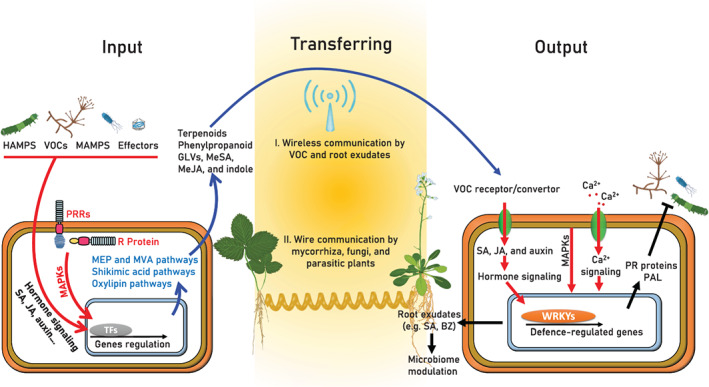FIGURE 3.

Illustration of the signal input‐transfer‐output model in plant–plant communication. Molecular patterns, volatiles and effector proteins of pests and pathogens elicit plant signalling pathways that promote volatiles emission and root exudation. Plant signals can be delivered to neighbouring plants through the atmosphere or soil (wireless communication), or transferred through mycorrhiza, fungi and odder (wired communication). Signals can be converted to their active form by receiver plant proteins. Signal perception by neighbour plants activates signalling pathways and phosphorylation cascades, which subsequently induce the expression of defence‐related proteins and metabolites. Signal perception also changes the root exudate and recruits beneficial microbes. BZ, benzoxazinoid; GLVs, green leaf volatiles; HAMPs, herbivore‐associated molecular patterns; JA, jasmonic acid; MAMPs, microbe‐associated molecular patterns; MAPKs, mitogen‐activated protein kinases; MEP, methylerythritol phosphate; MeSA, methyl salicylate; MVA, mevalonic acid; SA, salicylic acid; TFs, transcription factors; VOCs, volatile organic compounds [Colour figure can be viewed at wileyonlinelibrary.com]
